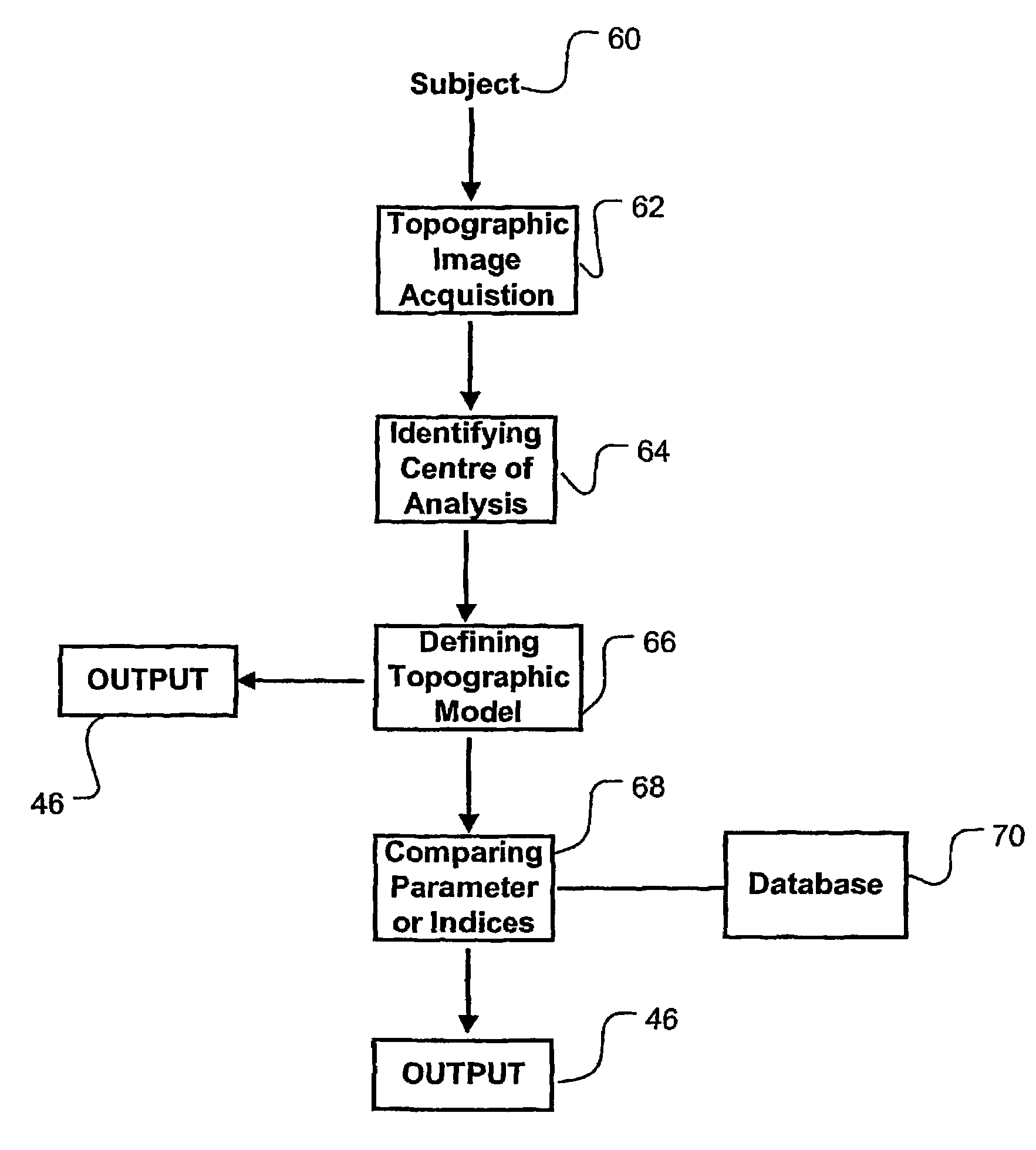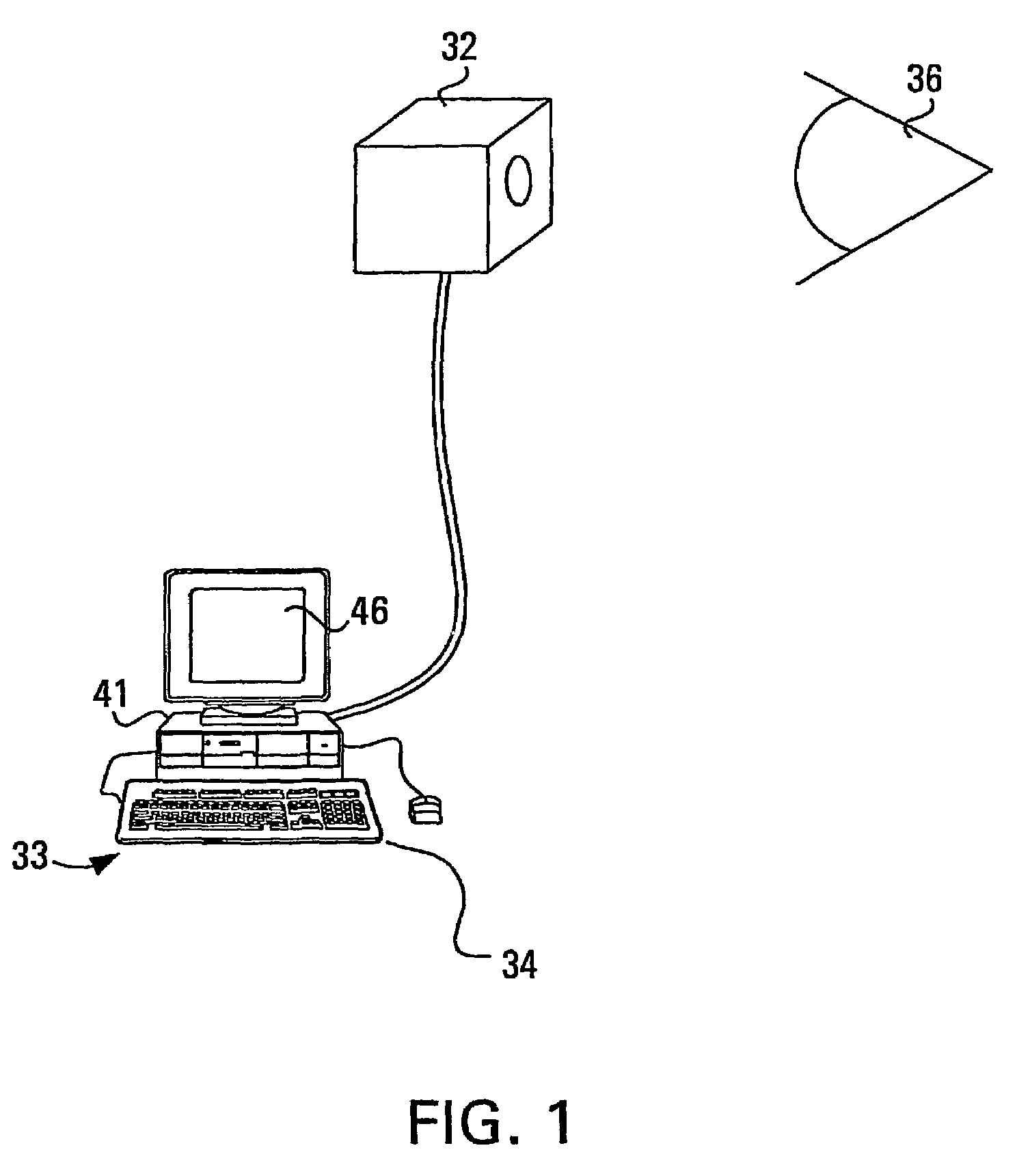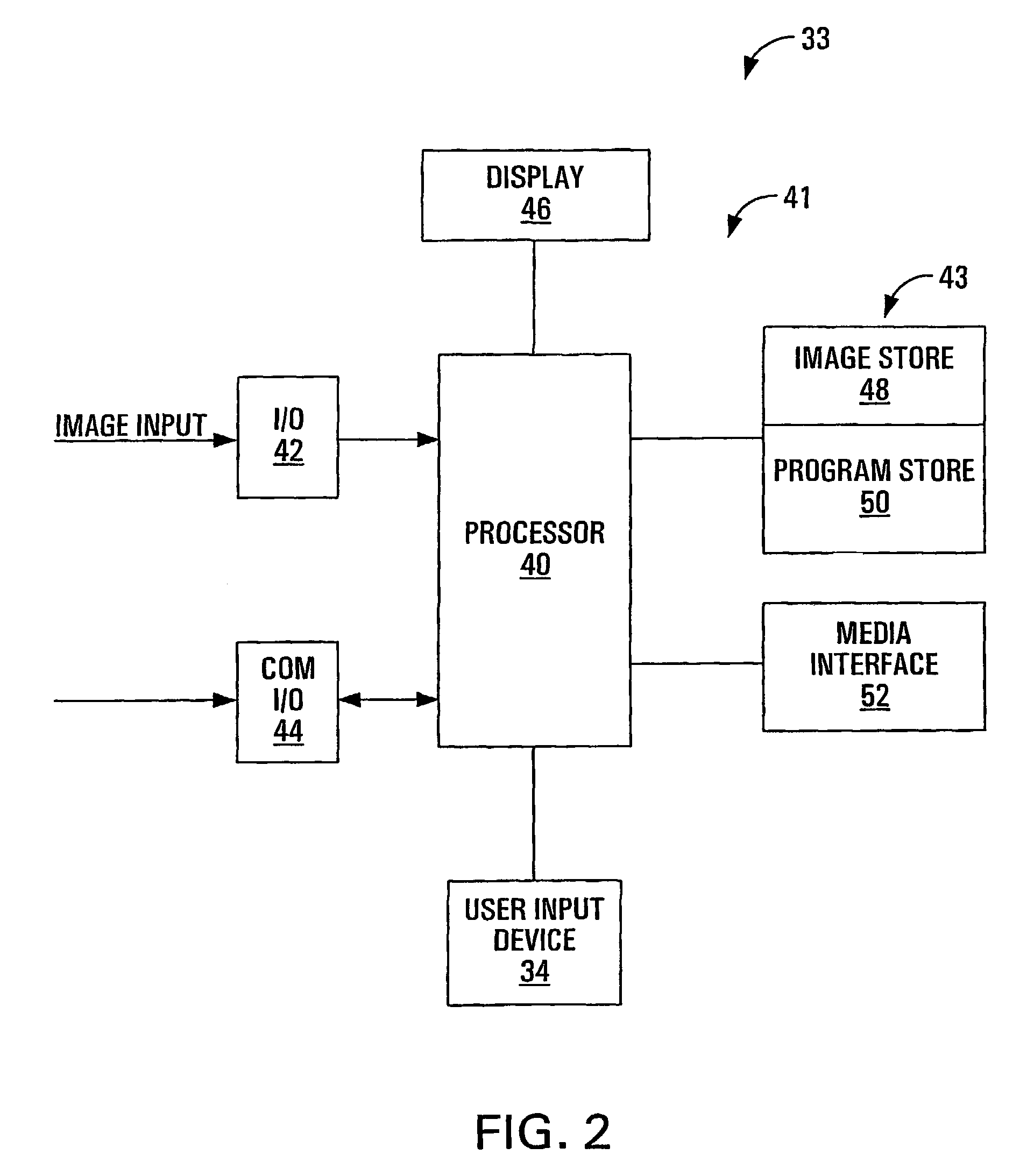Analysis of optic nerve head shape
a topographic analysis and optic nerve technology, applied in the field of optic nerve head shape topographic analysis, can solve the problems of requiring time and effort of a skilled technician, affecting the comparison of studies, and allowing the invention to be automated. the effect of facilitating the comparison of studies and complicating the comparison of studies
- Summary
- Abstract
- Description
- Claims
- Application Information
AI Technical Summary
Benefits of technology
Problems solved by technology
Method used
Image
Examples
example 1
[0057]As an example of the application of the invention, analysis was performed on a database of 100 images obtained from the eyes screened to exclude the presence of glaucoma, and 100 images obtained from eyes with open angles and showing visual field changes indicative of glaucoma. Criteria for subject selection are described in more detail in the following section. The model fitting, analyses and classification are implemented with the aid of a batch processing language which allowed the calculations to be done on each of the images in an automated fashion, without user intervention. To avoid the possibility of artefactual differences between the groups, images from normal and glaucoma patients are intermingled in the analysis sequence. Computations were performed using a 233 MHz Pentium II PC.
Criteria for Subject Selection
[0058]1) Volunteers for the normal group were excluded:[0059](a) if they had eye disease or a history of eye disease known to be related to glaucoma (e.g. pigm...
PUM
 Login to View More
Login to View More Abstract
Description
Claims
Application Information
 Login to View More
Login to View More - R&D
- Intellectual Property
- Life Sciences
- Materials
- Tech Scout
- Unparalleled Data Quality
- Higher Quality Content
- 60% Fewer Hallucinations
Browse by: Latest US Patents, China's latest patents, Technical Efficacy Thesaurus, Application Domain, Technology Topic, Popular Technical Reports.
© 2025 PatSnap. All rights reserved.Legal|Privacy policy|Modern Slavery Act Transparency Statement|Sitemap|About US| Contact US: help@patsnap.com



